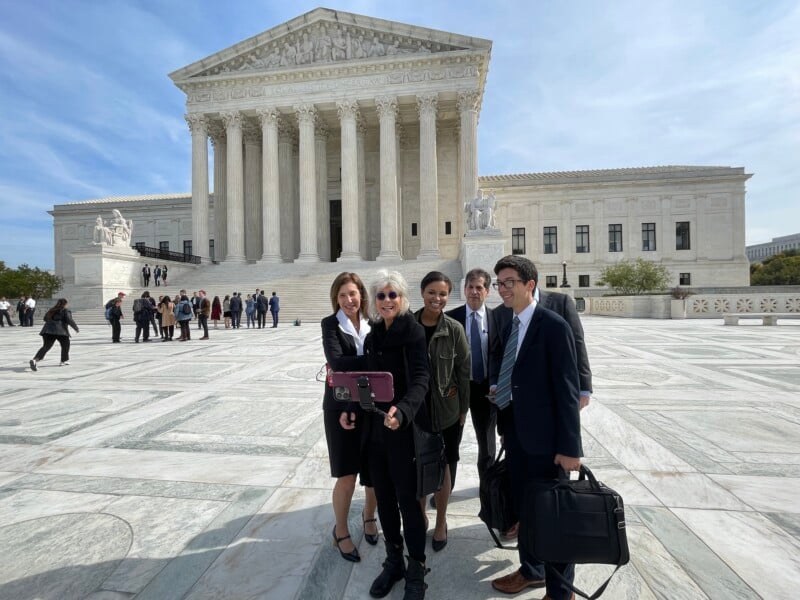Andy Warhol Estate to Pay Lynn Goldsmith $21K, Concluding Landmark Copyright Case
![]()
The landmark case between The Andy Warhol Foundation and photographer Lynn Goldsmith has finally been resolved with Goldsmith receiving more than $21,000 — despite forking out “well above $2.5 million” to fight the case.
The copyright litigation was jointly resolved on Friday when Goldsmith told a New York federal court that the case had been ended after Warhol’s estate agreed to pay her more than $21,000, including $11,000 in court costs.
Reuters reports that the law firm Latham & Watkins representing the Warhol Foundation said in a statement that the estate is “happy to put this litigation to rest and move forward with its work supporting up-and-coming artists.” Representatives for Goldsmith did not immediately respond to the news agency.
Warhol vs. Goldsmith
The copyright case goes back to 1981 when Goldsmith photographed Prince for Newsweek. Vanity Fair later commissioned Warhol to create an image based on the photographer’s work for a story in its magazine.
Goldsmith was unaware that her photo was being used by Warhol as a reference and didn’t see the image when it was published in 1984. She also didn’t know that the renowned artist created 14 silkscreens and two pencil illustrations based on her photo.
Goldsmith only became aware of Warhol’s work when the images were republished in May 2016 after Conde Nast licensed them from the Andy Warhol Foundation (AWF). Goldsmith then registered her photo with the copyright office which likely prompted the AWF to file a suit against Goldsmith who later counterclaimed.
Incredibly, the case went all the way to the U.S. Supreme Court which handed down a 7-2 decision in the photographer’s favor.

The Supreme Court only focused on the specific use of Conde Nast licensing Warhol’s work and did not rule on Warhol’s entire series based on Goldsmith’s work.
In Friday’s court filing, the AWF agreed to pay $10,250 based on the Conde Nast license while maintaining that “the original creation of the Prince Series was fair use,” and “nothing in the Supreme Court’s opinion undermines that view.”
Goldsmith states in the court document that she is “not advancing claims for relief for the original creation of the Prince Series because the statute of limitations has already expired.”
Million Dollar Case
In an interview with Billboard magazine, Goldsmith revealed the eye-watering financial impact the case had on her — requiring her to sell her home.
“The costs were well above $2.5 million. I knew from the start that there were not damages in there for me to collect on because I’m beyond the statutes of limitation,” Goldsmith told Billboard in November.
“Also, I didn’t sue them, they sued me. Not only did I want to stand up to the bullying — wealthy individuals as well as companies or foundations can weaponize the legal system to grab rights — but all photographers were just sick of people thinking they could just take things without permission.”
Goldsmith set up a GoFundMe in a bid to help her with the legal costs but she describes the near $70,000 raised as a “drop in the bucket.”
“We sold our house in Aspen and we moved to Nashville, where it’s far less expensive. I have a beautiful home, but it’s not Colorado. In addition, I made an agreement with my lawyers at a certain point that they would go pro bono,” Goldsmith said.
Goldsmith added that “you can make a lot of money on your sale in Aspen.”
Case Impact
The Chief Legal Officer of the American Society of Media Photographers (ASMP) said the importance of May’s ruling cannot be overstated.
“The last case that the U.S. Supreme Court fully opined on transformation and fair use was more than 25 years ago in Campbell v. Acuff-Rose. Here, the Court has added much-needed guidance to when a use is truly ‘fair’ and when it is an impermissible usurpation of the rights of the copyright holder,” said Thomas Maddrey.
Maddrey added that the case will likely have wide-ranging implications in not only the arts community but also across all intellectual property areas.